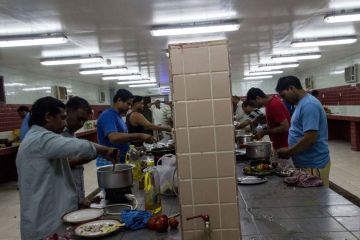For about seven decades now, tent cinema
companies accompany Jatras—annual religious fairs which begin in Maharashtra
after the crop gathering season ends. Travelling with these fairs—not very far
from the cinema capital of India, Mumbai—the tent talkies hawk an eclectic mix
of films: regional language films, Bollywood blockbusters, and even dubbed
Hollywood flicks as they travel across the rural landscape.
In keeping with the transient nature of their journey, the architecture
is





